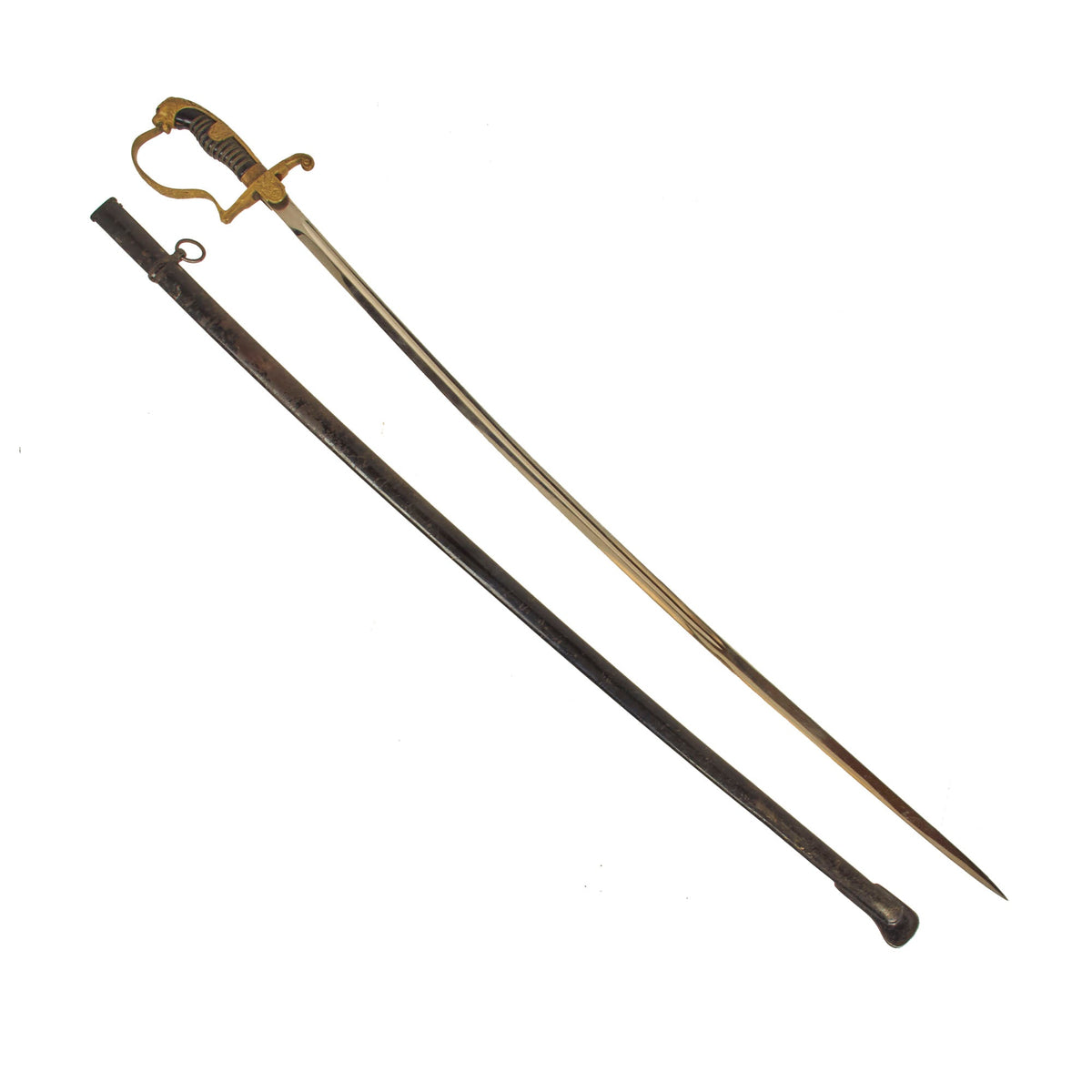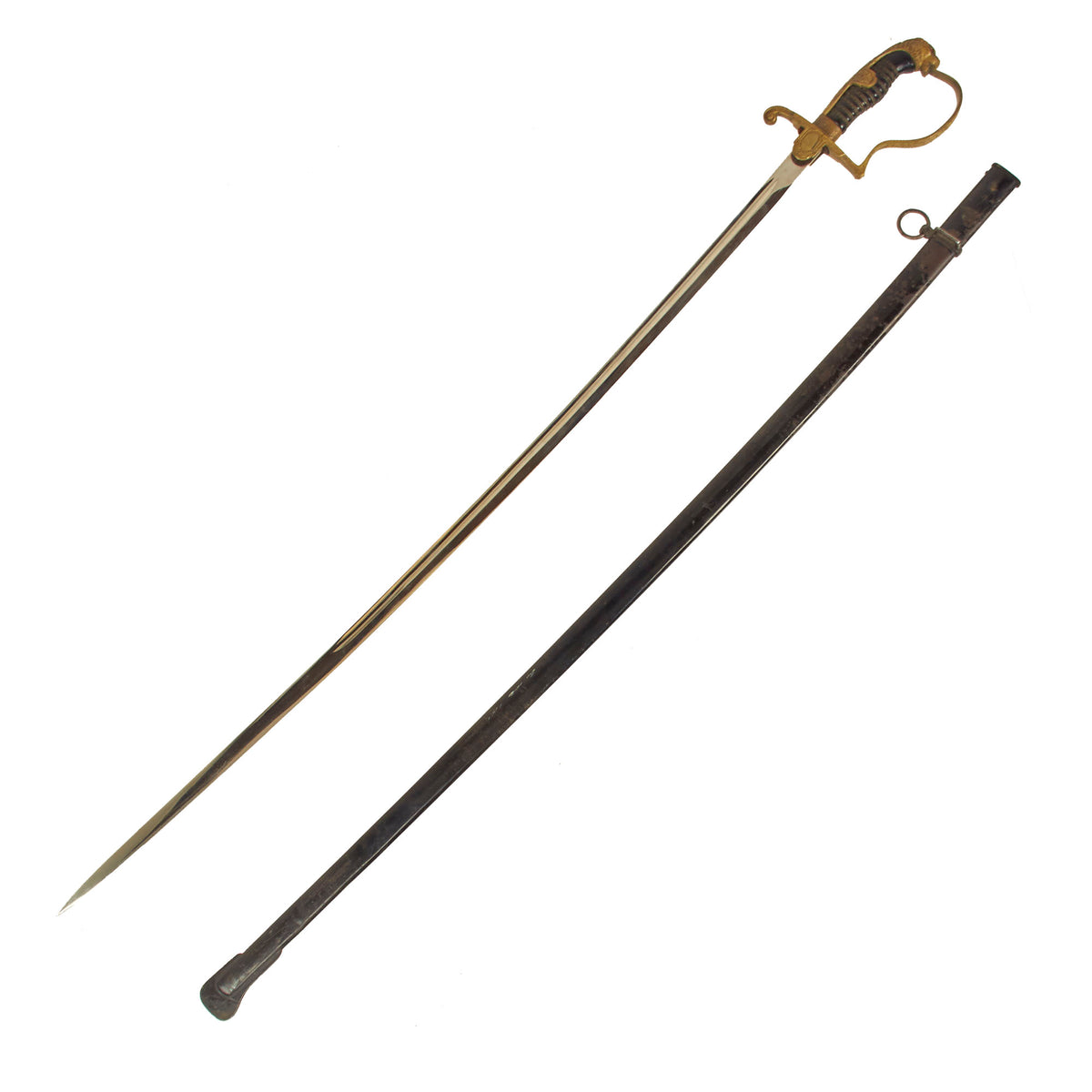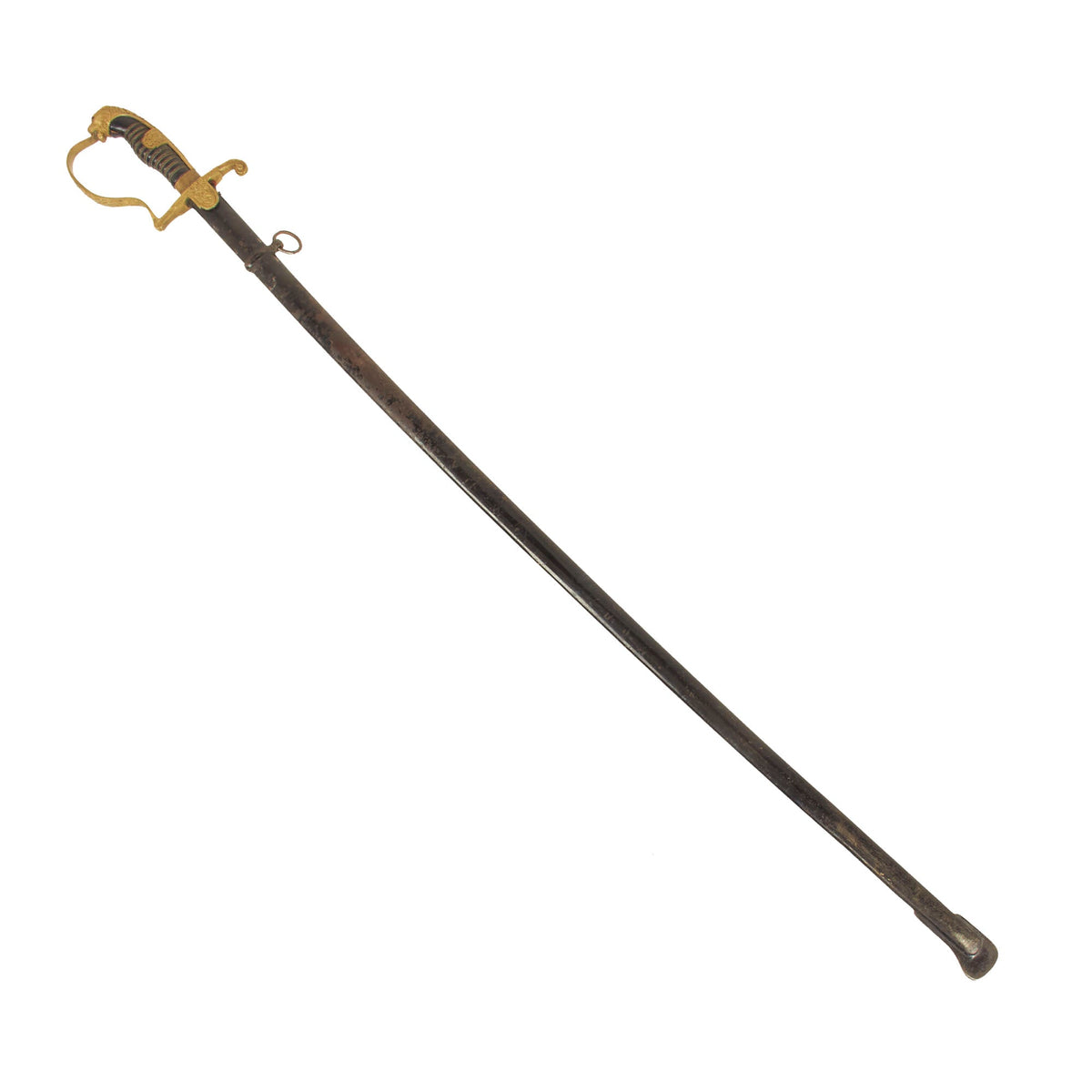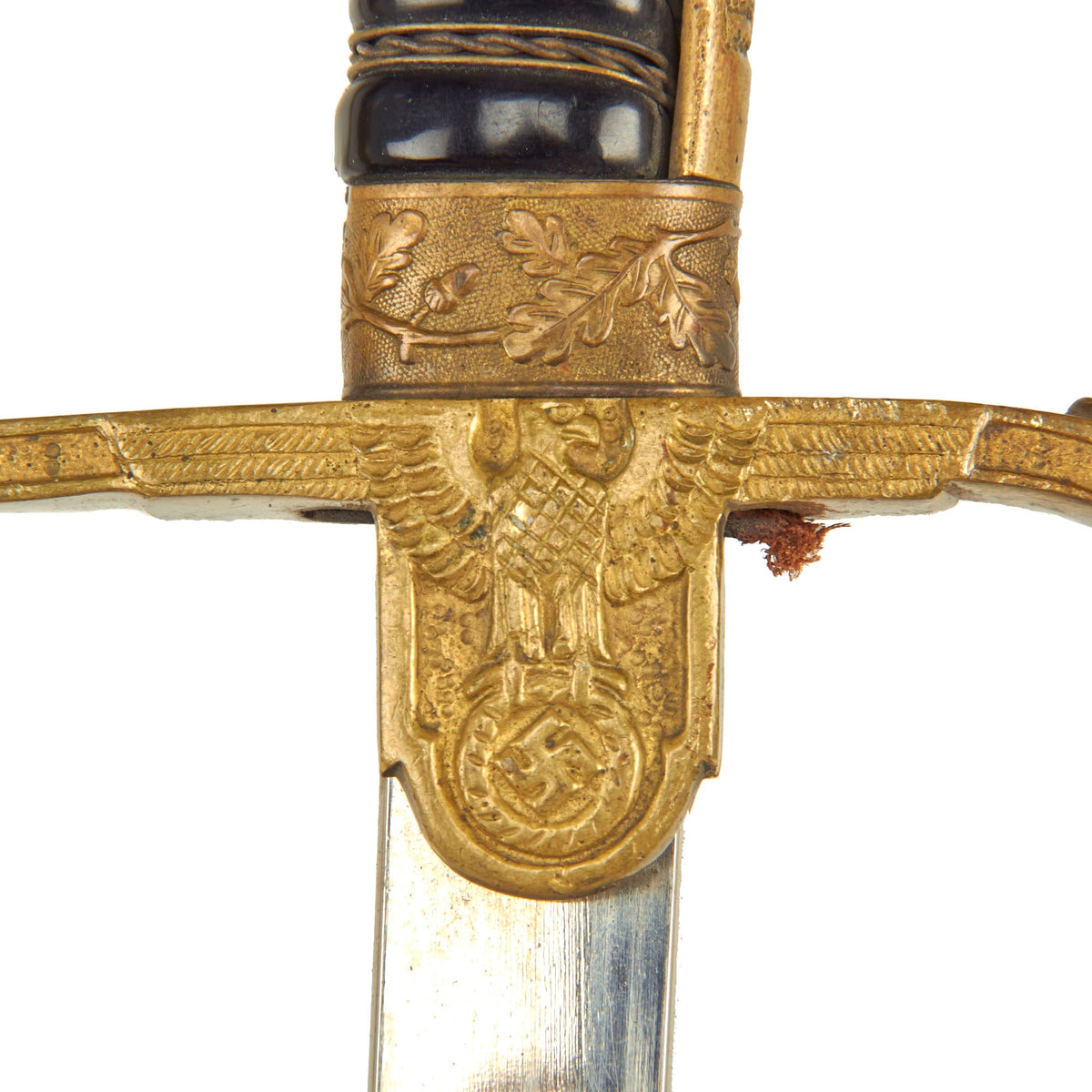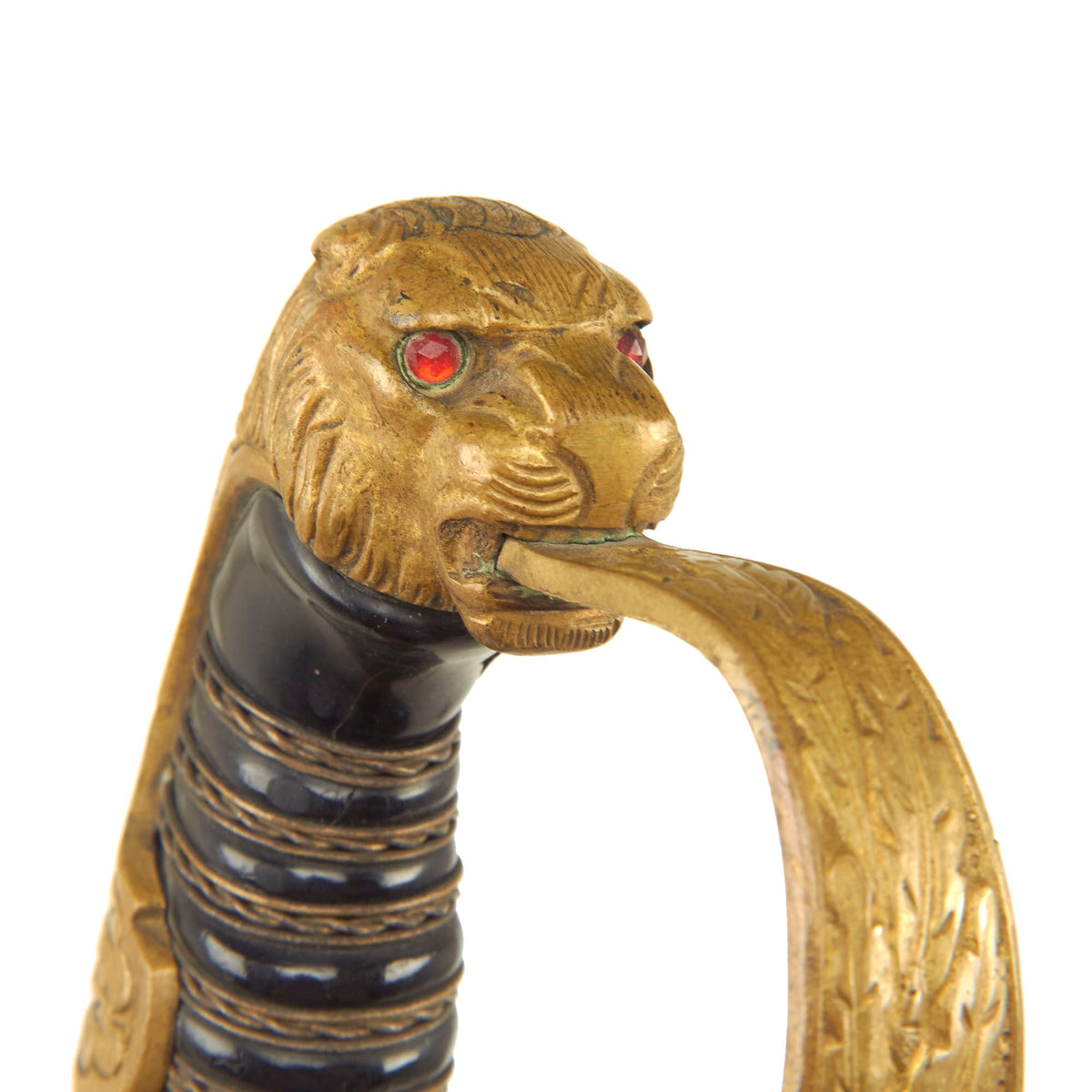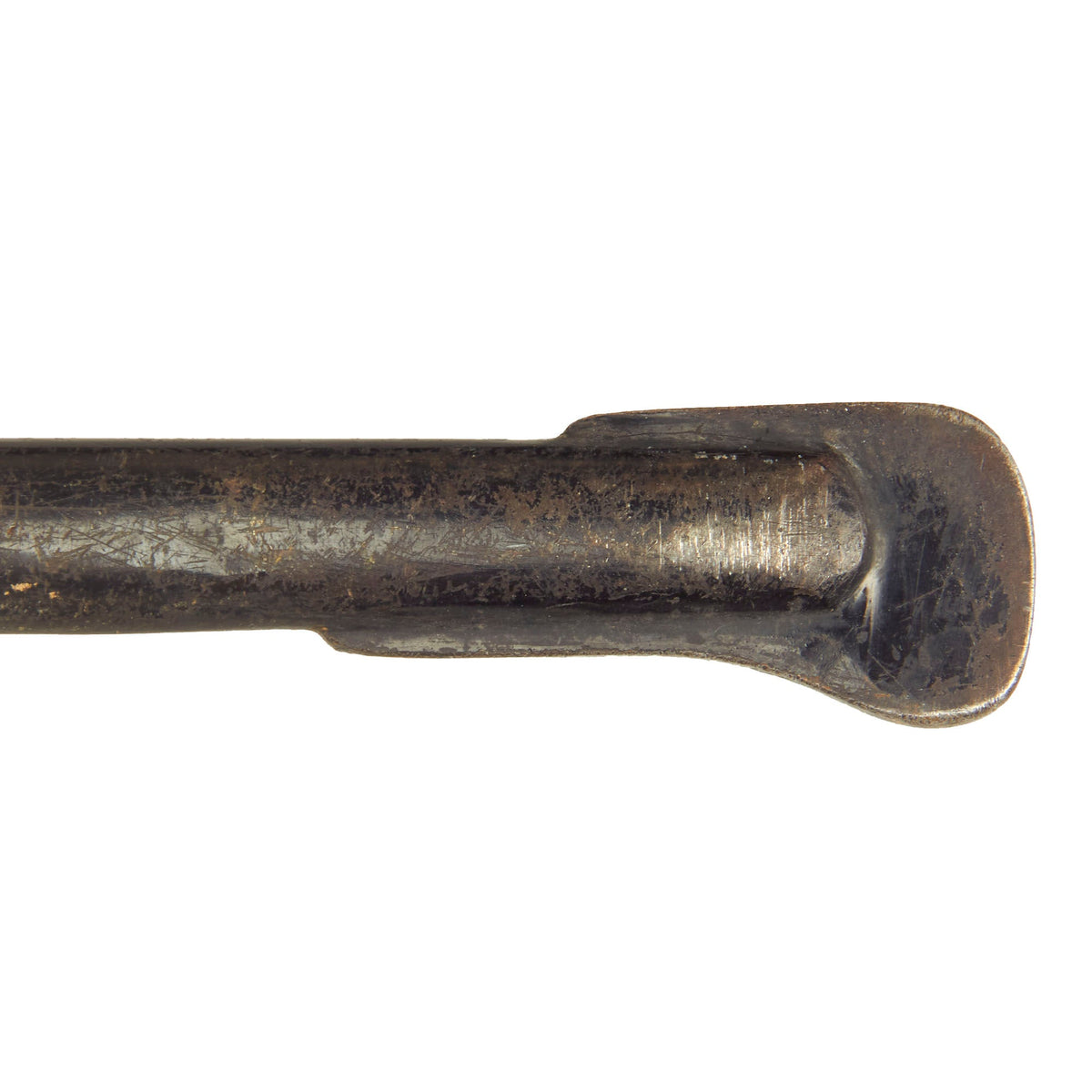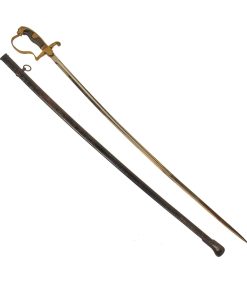Original German WWII Army Heer Officer’s Lion Head Sword with Nickel-Plated Blade & Steel Scabbard Original Items
$ 595,00 $ 178,50
Original Item: Only One Available. This is a beautiful classic Lionhead German WWII Officer sword, with a lovely nickel plated blade, complete with a its original black enamel steel scabbard. The all brass hilt consists of a finely detailed lion head cat with an engraved backstrap and “P” guard. The Lion is fitted with blood red faceted “jewel” eyes. There is nice detail throughout his whiskers, chin, and muzzle. The handwork is beautifully rendered throughout this brass. The backstrap consists of the classic German “Oak Leaves & Acorns” pattern, seen on many of these swords. The “P” guard also has a lovely raised out oak leaf and acorns, as does the grip ferrule, making a lovely grip.
The crossguard has a spread winged eagle which looks to the viewer’s right. The breast area of this eagle, as well as the wings, have been hand-enhanced. The hilt has unfortunately lost almost all of the original gilt finish, except for a few areas on the guard. It may have been “mercury gilt”, which evaporates over time. It now shows a lovely “mustard” patina overall.
The reverse has a small plate where a monogram is sometimes added, though this example is blank. The grip is a very good black celluloid-over-wood base, however it is cracked at the bottom, showing the underlying wood. The celluloid shrinks over time, and it split due to stress, with a crack in the wood as well. It is wrapped with four brass wires, the center two of which are twisted, which are in very nice condition, with a lovely patina. The hilt overall does wobble, common for dress swords of this age, even though the original leather blade buffer is still present.
The 34 1/2 inch blade of this example is in very good condition, with no wear or denting on the original blunt edge. It is fully nickel plated, which is retained quite almost completely, showing scattered areas with some scratching and light wear. The ricasso on either side of the blade does not bear any maker marks, but this is not uncommon. The large blade makers would often make just unmarked blades, which were purchased by retailers and artisans, who them built them into officer’s swords.
The scabbard of this example still has good original factory black enamel retained at around 75%, with areas of finish loss on the upper half of the scabbard, probably from being “hitched up” on the belt hook. The steel body is mostly straight except near the bottom, where there is some denting and minor bending that does not interfere with sheathing the blade. The enamel has a lovely pattern of crazing and checking that only happens after decades to non-modern finishes. It still has the correct hanger ring and loop for hitching up the sword against the belt vertically. There are two wooden strips inside the scabbard that act as the throat, which sometimes can protrude out of the top fitting.
Overall an very good condition German Army Officer’s sword from WWII, ready to display!
Specifications:
Blade Length: 34 1/2″
Blade Style: Single Edge w/ Fuller
Overall length: 39 1/2“
Guard dimensions: 5″ width x 5” length
Scabbard length: 36 1/4”
The German Army (German: Heer, was the land forces component of the Wehrmacht, the German armed forces, from 1935 to 1945. The Wehrmacht also included the Kriegsmarine (Navy) and the Luftwaffe (Air Force). During World War II, a total of about 15 million soldiers served in the German Army, of whom about seven million became casualties. Separate from the army, the Waffen-SS (Armed SS) was a multi-ethnic and multi-national military force of the Third Reich. Growing from three regiments to over 38 divisions during World War II, it served alongside the army but was never formally part of it.
Only 17 months after AH announced publicly the rearmament program, the Army reached its projected goal of 36 divisions. During the autumn of 1937, two more corps were formed. In 1938, four additional corps were formed with the inclusion of the five divisions of the Austrian Army after the Anschluss in March. During the period of its expansion by Adolf AH, the German Army continued to develop concepts pioneered during World War I, combining ground (Heer) and air (Luftwaffe) assets into combined arms teams. Coupled with operational and tactical methods such as encirclements and the “battle of annihilation”, the German military managed quick victories in the two initial years of World War II, prompting the use of the word Blitzkrieg (literally lightning war, meaning lightning-fast war) for the techniques used.
The German Army entered the war with a majority of its infantry formations relying on the horse for transportation. The infantry remained foot soldiers throughout the war; artillery also remained primarily horse-drawn. The motorized formations received much attention in the world press in the opening years of the war, and were cited as the main reason for the success of the German invasions of Poland (September 1939), Norway and Denmark (April 1940), Belgium, France and Netherlands (May 1940), Yugoslavia (April 1941) and the early campaigns in the Soviet Union (June 1941). However their motorized and tank formations accounted for only 20% of the Heer’s capacity at their peak strength.
Fast Shipping with Professional Packaging
Thanks to our longstanding association with UPS FedEx DHL, and other major international carriers, we are able to provide a range of shipping options. Our warehouse staff is expertly trained and will wrap your products according to our exact and precise specifications. Prior to shipping, your goods will be thoroughly examined and securely secured. We ship to thousands clients each day across multiple countries. This shows how we're dedicated to be the largest retailer on the internet. Warehouses and distribution centres can be located throughout Europe as well as the USA.
Note: Orders with more than one item will be assigned a processing date depending on the item.
Before shipping before shipping, we'll conduct a thorough inspection of the items you have ordered. Today, the majority of orders will be delivered within 48 hours. The delivery time will be between 3-7 days.
Returns
The stock is dynamic and we cannot completely manage it because multiple stakeholders are involved, including our factory and warehouse. So the actual stock may alter at any time. It's possible that you may not receive your order once the order has been made.
Our policy is valid for a period of 30 days. If you don't receive the product within 30 days, we are not able to issue a refund or an exchange.
You can only return an item if it is unused and in the same state as the day you received it. You must have the item in its original packaging.
Related products
Uncategorized
Uncategorized
Uncategorized
Uncategorized
Uncategorized
Uncategorized
Uncategorized
Australian WWII Owen MK1 Machine Carbine SMG Custom Fabricated Replica with Sling Original Items
Uncategorized
Uncategorized
Armoured Fighting Vehicles of the World: AFVs of World War One (Hardcover Book) New Made Items
Uncategorized
Uncategorized
Uncategorized
Uncategorized
Uncategorized
Uncategorized
Band of Brothers ORIGINAL GERMAN WWII Le. F.H. 18 10.5cm ARTILLERY PIECE Original Items
Uncategorized
Uncategorized
